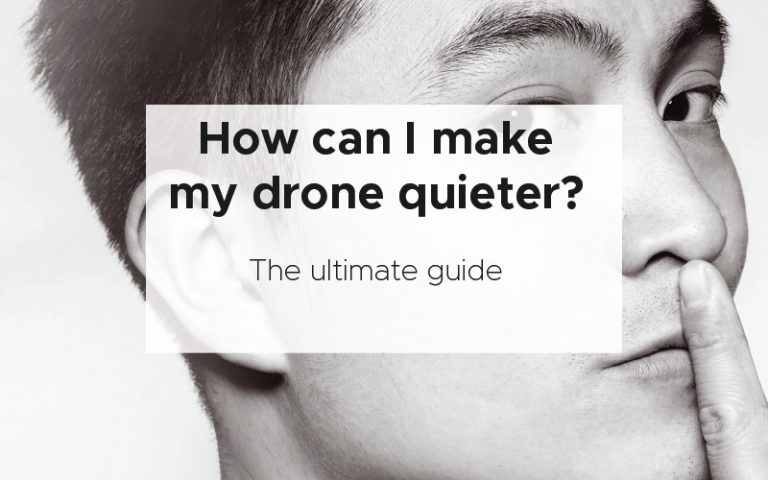If you’ve ever been around a drone or near a drone while it is being flown you will notice that it is actually quite loud. The sound the drone produces can be anywhere from a low continuous noise to a high pitched frequency that resembles a swarm of bees. As a drone pilot, you often try to minimise your effect on the environment and people in close proximity to the drone. There is a little bit of the stigma about drone pilots being obnoxious and I certainly hate being part of that issue. So, the question is: how can I make my drone quieter? There is no one answer and it depends on a range of factors. However, in this article we were going to go over all of the reasons why drones are noisy and the approaches you can take to minimise their noise.
How can I make my drone quieter? There are a number of reasons why drones are so noisy but it comes down to propeller size and rotational frequency. To make your drone quieter you need to replace the propeller with a wider and longer propeller blade or sand down the leading edge and surface of the propeller to minimise the noise. You can also use some aftermarket and third-party accessories to absorb and reflect the noise generated by the propellers.
Before we get into the array of ways that you can minimise the noise your drone is making let’s take a quick look at why drones are so noisy.
Why are drones so noisy?
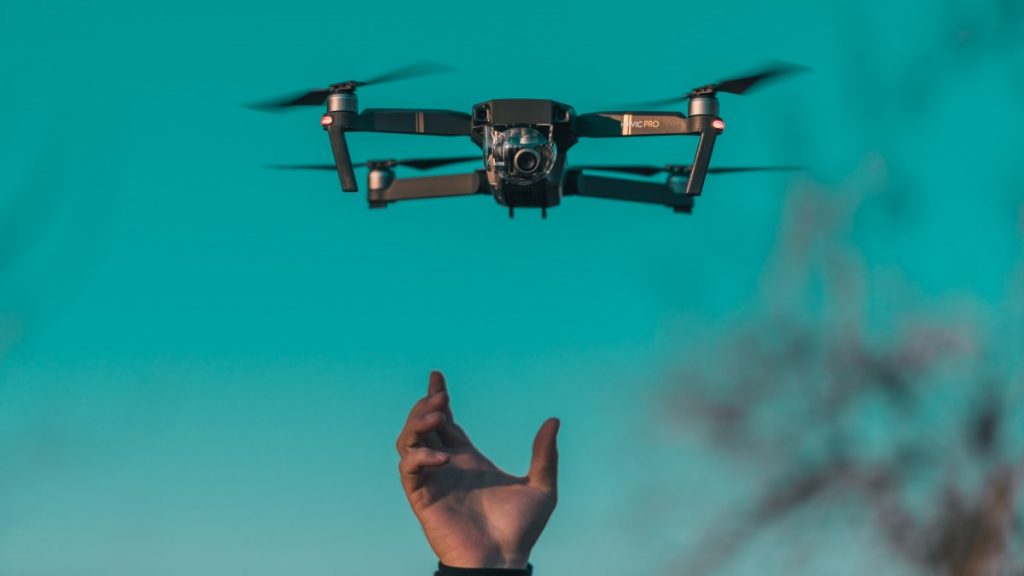
The reason drones are so loud is that they move propellers through the air incredibly quickly. This movement causes vibrations in the air surrounding the propellers which causes a significant amount of noise. As the propellers cut through the air in a circular motion, how often they cut through the same bit of their results in a pitch being generated. We talk about musical pitch in terms of hertz that is the number of waves per second that are generated. The faster the propellers spin the higher the pitch the slower the propellers spin the lower the pitch. I have the Mavic Air and the smaller propellers combined with the increased frequency of rotation means that the sound is like a swarm of bees. However, there are other drones that have longer propellers and a lower frequency of rotation of the motors. These tend to be the bigger drones such as the DJI Mavic Pro. But the story doesn’t end there.
Here are the three reasons why drones make so much noise while they are hovering and flying:
- Propeller rotation frequency – as we talked about above, if the propellers whip through the air quickly we get a higher frequency generated. There is not much you can do about the drone requiring a high rotational frequency. That is what keeps it in the air. However, you can choose a drone that is larger and has a slower rotational frequency to avoid the high-pitched “swarm of bees” sound.
- Propeller blades passing over arms – one of the main reasons drones make a high sound is that the propeller blades have to pass over the arms which hold them out beyond the body of the drone. As the propeller blades pass over the arms it temporarily creates a high pressure system over the arm and stops producing pressure under the aircraft. This creates a pressure wave and a sound which is a fairly low frequency.
- The size of the drone – the weight of the drone will dictate how fast the propellers have to spend to generate the don’t thrust that is required for it to hover. If you are buying a heavy drone the propellers will spin faster and will be much louder. Think of a helicopter as being the ultimate loud heavy drone for comparison.
- The length, pitch and depth of the propellers – larger propellers this place more air while they spin that means they produce more thrust and require less of a rotational frequency to keep the drone in the air. The sound is also changed by the angle, or pitch, of the propeller as the pitch determines how much disturbance it causes in the air.
So, there are the reasons why drones are noisy. You will notice that they are all around the propeller and speed at which the propeller moves. So that should give you an indication of what are the best ways to reduce the drone noise during flight. The fact of the matter is that all drones will generate some form of noise.
Can drones be quiet?
Due to the physics of keeping a drone in the air, there is nothing that we can do to avoid the drones displacing air and causing a significant amount of noise. However, there are some clever companies and products on the market which claim that they can reduce the noise in two ways:
- absorb the sound generated – there are a few products on the market which claim to reduce the noise of a drone while it is hovering. This approach relies on balancing the displacement of the air with absorbing the sound waves generated by a propeller whipping through the air. There are very few drones that are using this approach so you require the use of third-party accessories to achieve absorption of the sound.
- Changing propeller shape and morphology – because the propellers and motors are the primary noise generation parts of a drone there are plenty of manufacturers of drone propellers that are changing the shape and surface textures of the propellers to minimise noise. There are mixed reviews on this approach but if you want to give it a go it is relatively inexpensive to purchase some stealth propellers.
In the next section we are going to have a look at the most effective ways of making your drone less noisy.
How can I make my drone less noisy?
If you have a look at the online forums and answers to this question there are a range of sceptical consumers and drone enthusiasts who have tried a whole range of approaches. Some of them recommend very simple approaches like sanding down the surface of your propellers (to remove manufacturing branding) and also recommend putting on propellers with different pitches to test the noise generated. One thing is clear however, that there is a lot of misinformation about what actually works and what is just hearsay. So in this section we are going to go over exactly what you can do and the different, simple, approaches that exist and have been tried and tested.
Use more motors
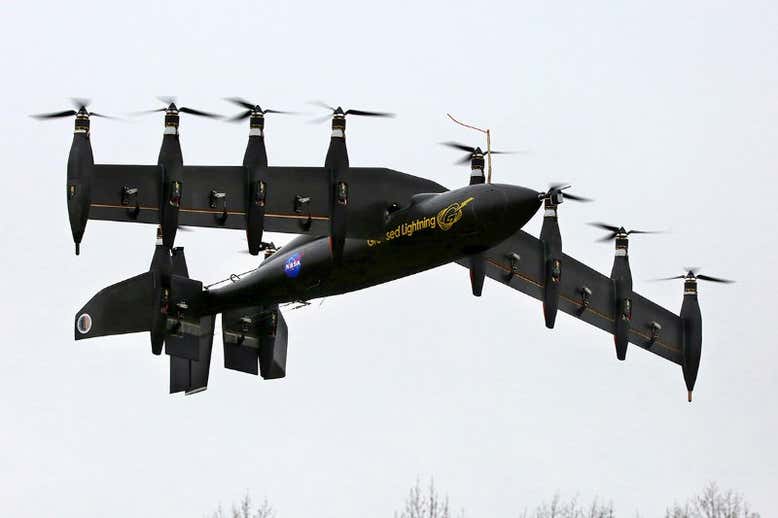
In 2015 a team from NASA developed a prototype drone which was developed to silence annoying drone noise. This was because at that time drone delivery of Amazon packages and postal mail was likely to be something that would happen in the near future. Having fleets of drones operating in urban airspace would clearly become far too noisy and this team from NASA decided that it was a problem they wanted to tackle. The drone was made from carbon fibre and had a massive wing span of 3 m. It was not a quadcopter like we see with other drones it actually had eight motors. The reason it had so many motors was to generate more efficient electric propulsion and thrust. The idea was simple – several small motors are quieter than a few larger ones.
Since there are so many propellers on the aircraft each motor can operate at a slightly different RPM. This means that there is a generation of smaller harmonics than one massive drone and single frequency generated. This is called frequency spectrum spreading and is only possible because there are many propellers and they are very precisely controlled by the electronic control unit.
The outcome of this was that when this prototype drone flew at 30 m it was almost inaudible. Perfect for package delivery.
Bigger slower propellers
larger propellers can displace more air than smaller propellers. That means that they wouldn’t have to spin as fast to create the same amount of thrust to keep the drone in the air. The bigger propeller will cut through the air less times per second than a larger one. This will not remove the noise of the drone completely but will lower the frequency of the noise to a more acceptable level.
When I was flying my DJI Mavic air recently it was significantly louder and more irritating than another person in the area he was flying a Mavic DJI pro. You can buy aftermarket propellers for pretty much every type of drone. But these have limited impact on the volume of the noise generated.
Increasing the diameter of the propellers will increase their thrust factor and create a greater vertical push. This will be detected by the flight controller and it will compensate by reducing the motor revolutions per minute. The trade off is that larger props with reduced RPM will stress at the motors and cause increased demand on the batteries and other internal components.
One of my recommendations is that you go to a drone enthusiasts club and check out the noise of each of the types of drone before you purchase one. That will help you decide on which drone is the most suitable and least irritating for the type of drone missions that you are going to do.
Sand down the surface
When you buy a drone from a reputable manufacturer quite often the drone has the manufacturers logo embossed or raised on the surface of the propeller.
For example one user in the DJI forum said that removing the DJI logos, cleaning up all the other moulding marks, and smoothing the surface with sandpaper resulted in a significant decrease in the noise generated.
Sometimes, when I am flying or I have accidentally flown into high grass the leading edge of my propellers can have chips. If they are very small I can sand out the small bumps so that the leading edge of the propeller cuts cleanly through the air. Otherwise replacing the propellers is your only option.
If you have bought a commercially popular drone they quite often have moulding marks on the plastic which have been formed during the manufacture of the propeller. The leading edge should feel branded and smooth – incapable of causing harm to a finger. It is the trailing edge that should be as sharp as possible. Using a 800 or 600 sandpaper and correcting the shape slowly by hand is one of the best ways to fine tune the shape of your propeller. This grit leaves a slightly rough surface but you can polish them back with a finer grit sandpaper if you want to maintain a shiny effect on the surface. The plastic is a reinforced nylon composite so it’s not easy to damage. If you are worried that it will affect balance just spend the same amount of time on each propeller and you will remove the same amount of material per propeller.
The blade shape of the propeller will have a significant effect on the sound that the drone creates. Wide fat blades tend to be low-frequency and more acceptable to the screeching produced by thin narrow blades. Keep your propellers clean and remove any marks after flights and balance your propellers at regular intervals and you will have a reduced volume and frequency noise generated.
Low noise propellers
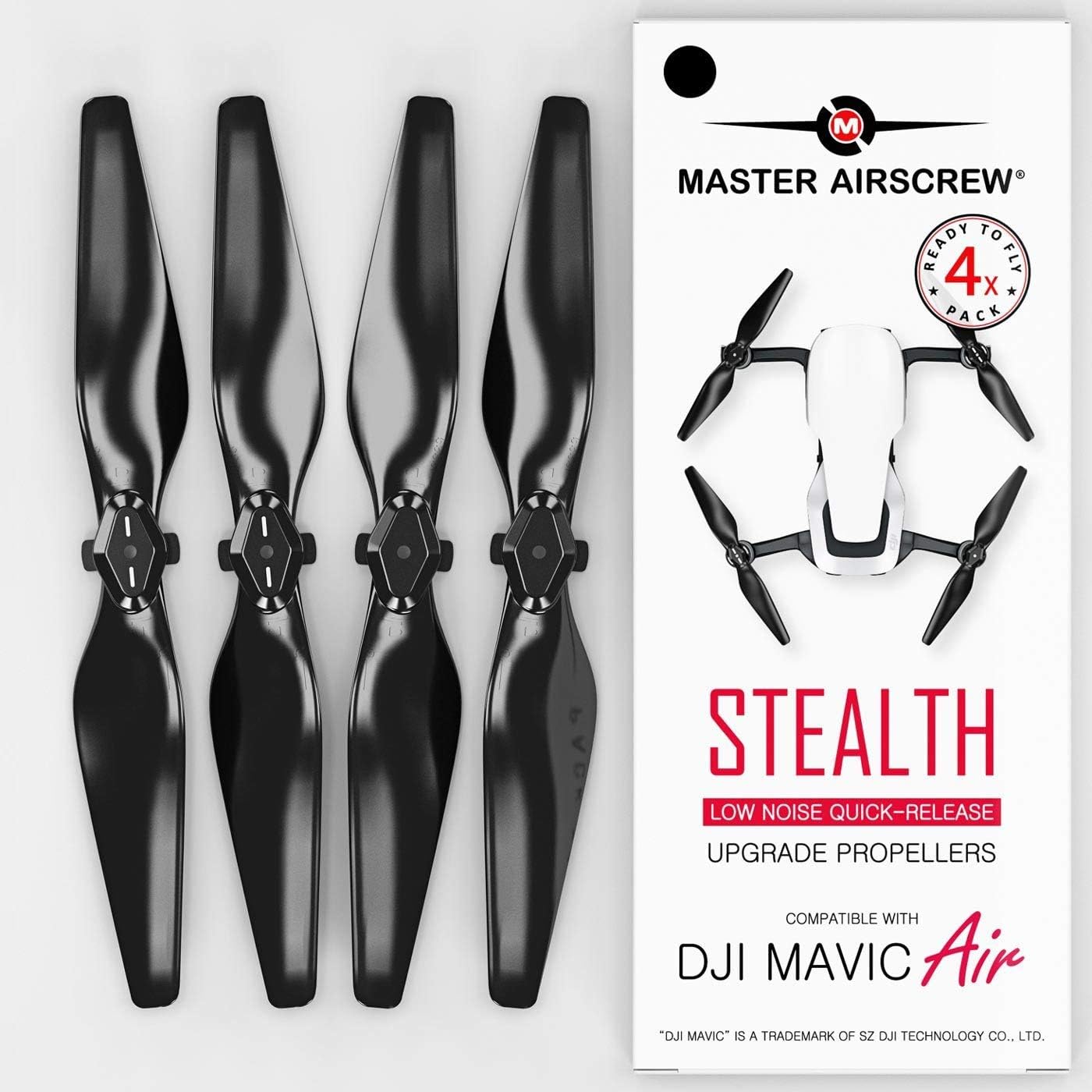
There are plenty of aftermarket low noise propellers. If you go to any retailer (such as Amazon) and type in low noise propellers and your model of drone you will find a range of low noise, quick release upgrade propellers for your model. They tend to work in a couple of ways
- they reduce revolutions per minute
- stealth propellers have a very smooth surface.
Typical outcomes of using stealth propellers are a reduction in noise by about 3.5 dB, by reducing the revolutions per minute by about 20%. An added side-effect of super-efficient and smooth blades are that you are likely to get a longer flight time with up to 14% more hovering time.
The good thing about using this approach is that there are no setting adjustments to make to your drone to obtain optimum performance. No setting changes need to be made. All you have to do is take off the old propellers and put on the new stealth propellers and the DJI Mavic air will make all of the adjustments. If there has been a software update you can play with the gain to deliver a better performance.
Passive noise reduction
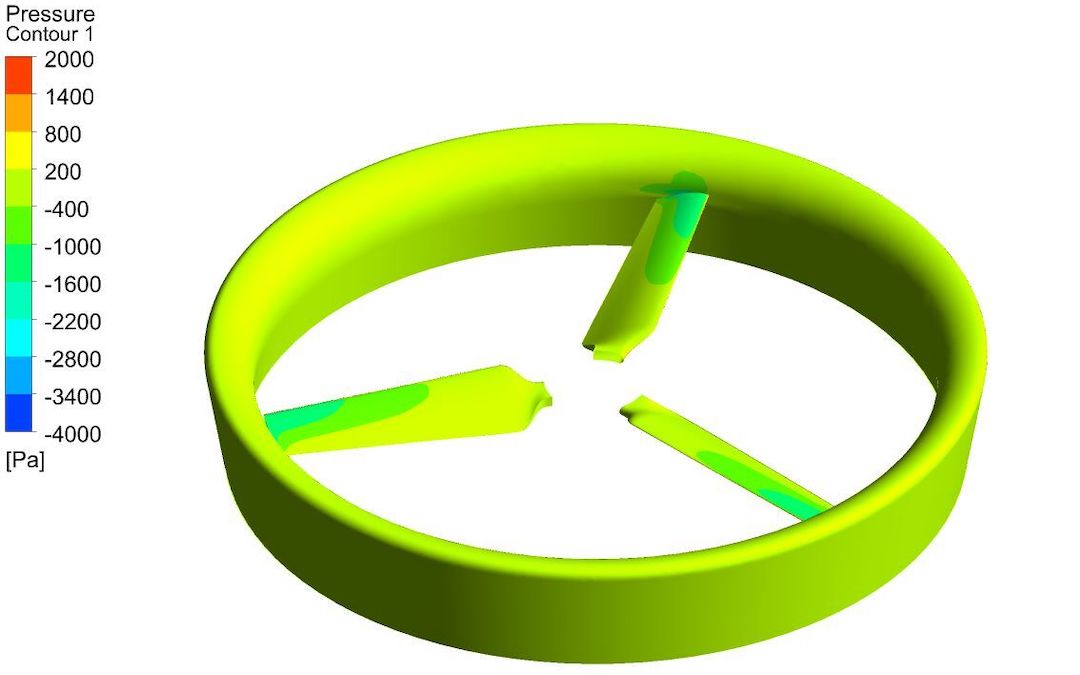
A company called Dotterel has produced noise reduction and safety shrouds for propellers. They reduce the noise that is created through the complex interaction of the blades with the body, arms and body of the drone. A safety shroud firstly reduces the noise by the propeller by absorbing the sound and then reflects any residual noise up and away from people that are on the ground below. There are specific frequencies absorbed in the core as it is made of acoustic materials that absorb some frequencies.
The Schroders can be retrofitted to nearly any drone manufacturer but must be specific to the drone that you are using. This company is currently working with customers, external researchers and academic institutions to stay at the forefront of noise reduction technology for drones.
The DIY option
the final option for you if you are concerned that your drone is too loud is to create your own propellers for the drone that matched the size and pitch and depth that reduces the noise. This isn’t an easy option and can quickly cause issues with your flight. Also, DIY and home-made propellers may not be as sturdy and stable as commercial propellers – so use caution if you are going to go down this route.
Here is a YouTube video of someone who created DJI Mavic air quiet props from retrofitted Anafi propellers.
If you’re going to go down this route just make sure that you are a confident and capable manufacturer of propellers and choose propellers that closely match the length that you are replacing.
Now, let’s take a look at some of the quietest drone is available on the market right now.
What is the quietest drone available?
When you are searching for a quiet drone it can easily become overwhelming with the sorts of options and drones that are available in your price range. First of all let’s look at the quietest DJI drone
Which is the quietest DJI drone
The DJI Mavic Platinum pro is one of the quietest drones to hit the market. The company promises that is 60% quieter than its other Mavic models.
DJI Mavic 2 Pro
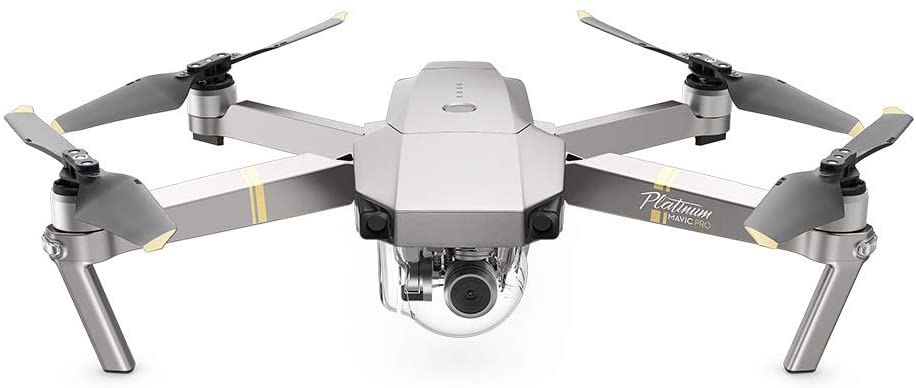
DJI Mavic Platinum Pro is a great reliable option if you need to do a wide range of other videography or drone photography.
Many buyers have reported this as the best drone that you can have – and I’d have to agree! The pro is a workhorse that packs enough power to get nearly every time of videography and photography done! This drone has a maximum speed of 40 mph and a flight time of 30 minutes. It has 12.71 million pixels and a range of photography and video recording modes.
This won’t be a purchase that you regret in any sense. This model has been superseded by the DJI Mavic air 2 but there are still models available for purchase on Amazon and other retailers.
Cons
~ No precision landing
~ Discontinued and superseded by the Mavic air 2
Conclusion
If you think your drone is too noisy there are a few things you can do about it to minimise the noise. This includes sanding down the surface of the propellers, trialling a few different types of propellers (pitches, length, depth) and also using some third-party accessories to reduce the noise.
In this article we have looked at every reason why a drone makes noise and how the rotational frequency of the blades affects the pitch and volume of that noise. There are new technologies coming out all the time and I’m in no doubt over the next few years there will be more drones that are quieter and are promoted because of their stealth qualities.
If you want a really quiet drone consider buying the DJI Mavic pro platinum as it is significantly quieter than other drones on the market. Although it has been superseded by the DJI Mavic air 2 it is still a worthy drone with plenty of grunt and power at a reduced noise.
Happy drone flying my beautiful friends and I hope that your drone gets quieter as a result of this article.
